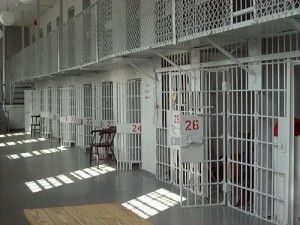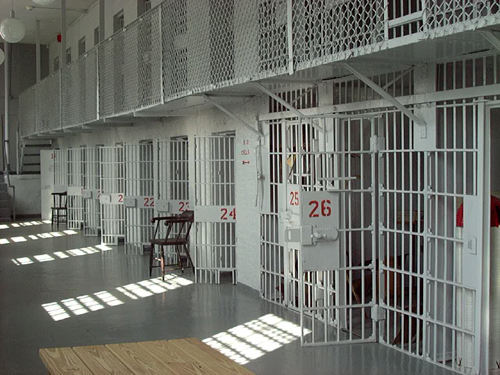 A critical take on the Conservative ‘tough-on-crime’ agenda
A critical take on the Conservative ‘tough-on-crime’ agenda
by Natasha Brien & Sasha Carty – BASICS Issue #27 (Dec 2011 / Jan 2012)
Now that the Conservatives have their majority government, they will be forging ahead with the so-called ‘tough-on-crime’ agenda they’ve been pushing for five years. One of the first changes came earlier this year with the repeal of accelerated parole (previously available to first-time, non-violent, federal prisoners after serving 1/6 th of their sentences). The basis for eliminating this law was the case of Mr. Earl Jones and Mr. Leon Kordzian – two men convicted of extorting large amounts of money from primarily affluent people.
What is striking is that the repeal of accelerated parole was applied retroactively. Unless prisoners had an acceptance letter in hand or were already out in the community, they were immediately denied accelerated parole, creating a backlog in the system. This was clearly one strategic move to ensure more bodies remain within Canadian prisons.
Building upon this is the omnibus crime bill, which Harper publically promised to pass within 100 sitting days of being re-elected. Many people have jumped on board with the bills, blinded by the fallacy that tougher laws and longer sentences will ultimately reduce the crime rate (a rate that has been decreasing prior to harsher crime bills) and in return create a safer society.
The omnibus bill contains nine previous pieces of legislation rolled up into one, bills that propose changes such as introducing mandatory minimum sentences, thereby removing discretion from judges’ hands and creating lengthier sentences. Custodial sentences (time served in a jail/prison) will also increase as community and/or conditional sentences (like house arrest) become increasingly rare.
Ironically, the Conservatives legislative agenda on crime is patterned from failed systems within some U.S. states, such as California, a state being forced to release tens of thousands of inmates due to overcrowding in prisons and economic deficits. Within a Canadian context, mandatory minimum sentences will conflict with First Nations’ rights to appear before Gladue Court (a court that evaluates the types of sentencing appropriate due to Aboriginal heritage).
Further, what this pro-punitive discourse is not conveying to the general public are the prison conditions, which are volatile, often violent, conducive to the transmission of communicable diseases (HIV, Hepatitis C), and can promote/increase mental illness. In Ontario, when a man is federally sentenced, he must first go to the Millhaven Assessment Unit (MAU), where inmates are locked in their cells (two people to a cell) for twenty-three out of twenty-four hours a day.
In addition, there have been numerous in-custody deaths, severe injuries, and abuses of power that continue to occur in federal prisons. Two examples this year alone include the apparent suicide of Jamie Bouman on February 21, 2011 who died in MAU, and the fatal shooting (by officers) of 29 year-old Jordan Trudeau on March 20, 2011 in Millhaven’s J-Unit, as he allegedly was stabbing another inmate.
While many people are still in the ‘honeymoon’ phase of the ‘tough-on-crime’ agenda, what is not being discussed is that people who go to prison will in most cases be released back into the community. What will this transition look like after enduring such harsh, cold, and inhumane conditions.
Instead of investing in a prison industrial complex, we should be focusing resources on systemic changes – eradicating homelessness, increasing access to education, eliminating feminization and racialization of poverty to name a few. Secondly, efforts should be redirected to restorative justice, rehabilitation, and reducing stigma for people who have ‘paid their debt to society ’ by serving time.
Just what exactly is motivating the push to throw more people into prison? Liberal-minded commentators in Canada say it is just the Conservatives being ‘ideological,’ as if they are simply blinded to the effects of their own legislation. But maybe they are not blinded by their ideology. Recently released estimates of what the omnibus crime bill will costs stand at approximately $78.6 million dollars over five years. Since coming to power, the Conservatives have doubled annual spending on Canada’s prison system to $2.98 billion.
So perhaps the Conservatives can see quite clearly what the legislation will mean: on the one hand, more money for their big-business friends in the prison construction industry and criminal justice bureaucracy, and on the other hand, the perpetual criminalization and containment of indigenous, women, working-class, and racialized peoples.
Comments
